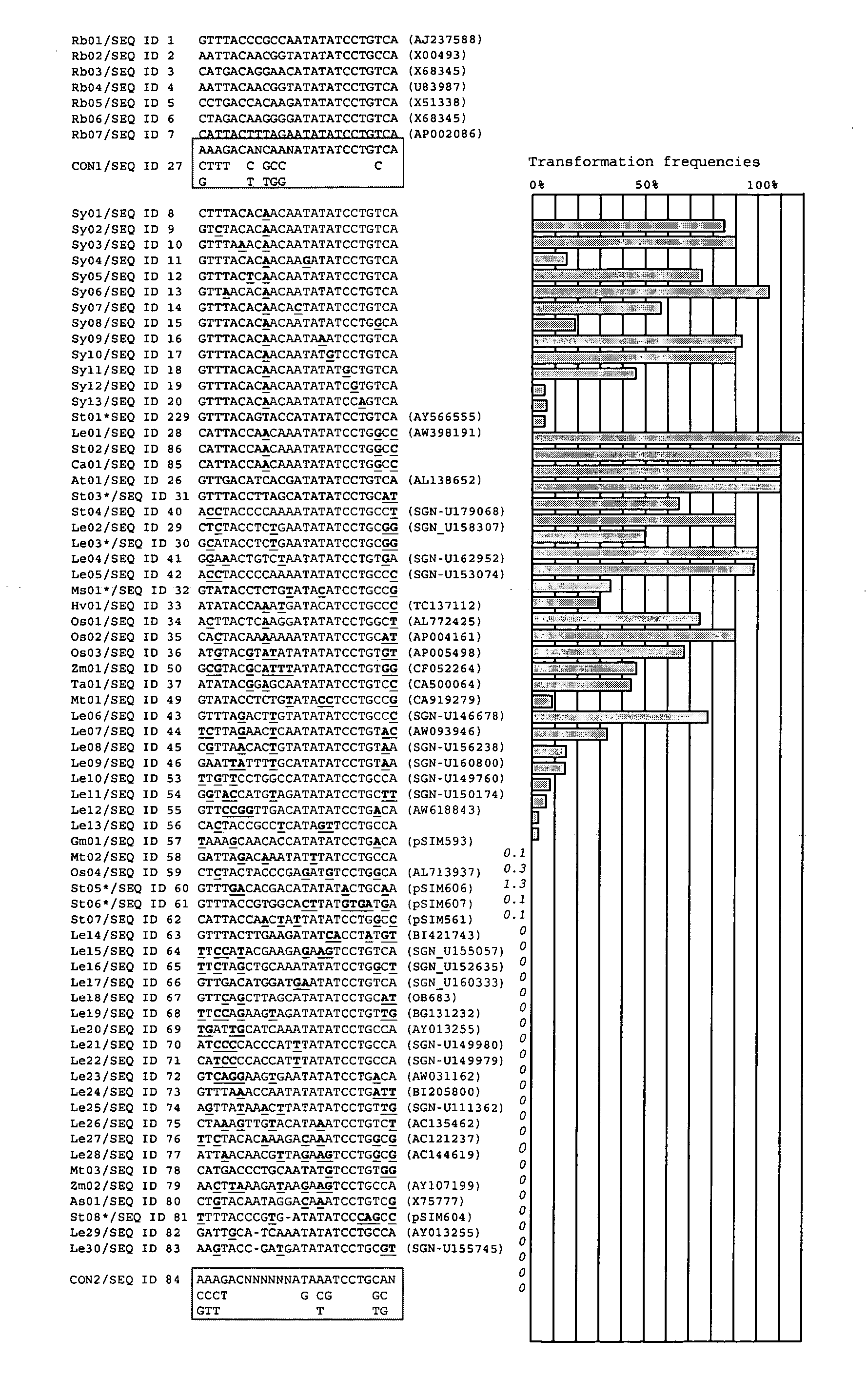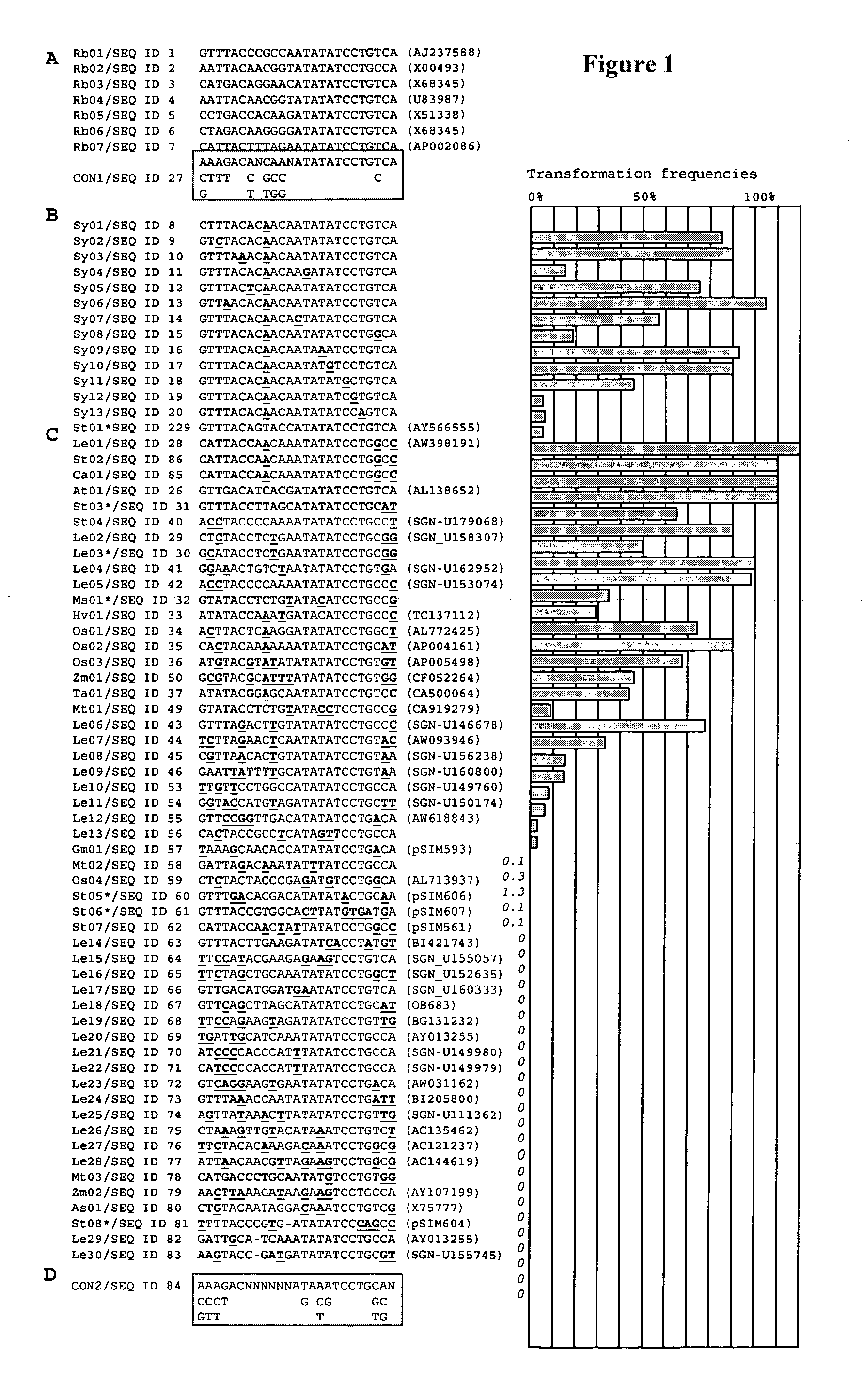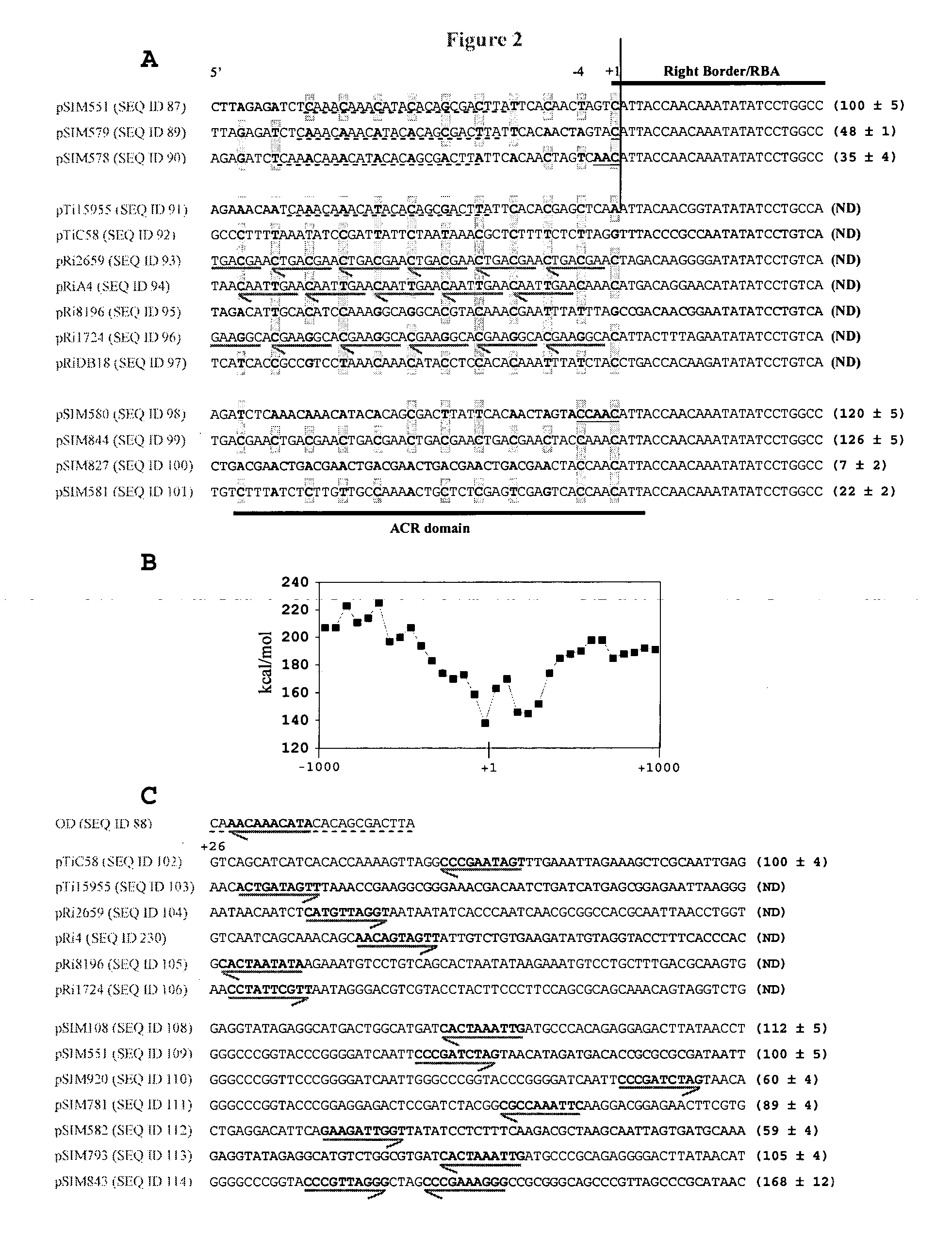Plant-specific genetic elements and transfer cassettes for plant transformation
a technology of plant genetic elements and transfer cassettes, applied in the field of nucleic acid molecules and sequences, can solve the problems of infidelity of dna transfer, unsuitable plasmid backbone transfer, and only very little optimization of transfer frequency, so as to enhance the transformation efficiency and enhance the transformation efficiency
- Summary
- Abstract
- Description
- Claims
- Application Information
AI Technical Summary
Benefits of technology
Problems solved by technology
Method used
Image
Examples
example 1
Initial Cleavage Sites
[0266] Isolated plant sequences were used as effective initial cleavage sites to mediate DNA transfer as well as effective final cleavage sites to limit the co-transfer of vector backbone sequences. In fact, backbone transfer frequencies with plant-derived cleavage sites that were linked to upstream AT-rich regions and downstream C-cluster regions were lower than obtained with conventional Left Borders. The DNA sequences described herein permits the construction of efficient all-native transfer DNAs that can be used for the production of intragenic potato, tomato, and alfalfa plants.
Cleavage Sites
[0267] Initial cleavage sites function in the initiation of DNA transfer and are positioned in transformation plasmids at the junction of (i) the 5′-end of sequences destined for transfer from Agrobacterium to plant cells (the transfer DNA) and (ii) plasmid backbone sequences required for maintenance of the plasmid in Agrobacterium. Their sequences deviate from tha...
example 2
Spacing Requirements for an Extended Overdrive Domain
[0283] The effective test plasmid pSIM551 contained St02 linked to the sequences that contain a 31-bp fragment of pTi15955 inserted between novel sequences. The DNA region comprising this sequence and the first nucleotide of Le01 is the part of SEQ ID NO: 87 depicted in SEQ ID NO: 199, and represents a UI region. This arrangement placed the cleavage site for potato at a distance of 12 base pairs from the overdrive, an element that was reported to promote DNA transfer (van Haaren et al., 1987) and depicted in SEQ ID NO: 88.
[0284] Although the overdrive element is believed to function in a position independent manner (Shurvinton and Ream, 1991), we found that a single base pair insertion between St02 and upstream DNA (SEQ ID NO: 89) in pSIM578 reduced transformation frequencies of pSIM579 about two-fold (FIG. 3A). Furthermore, the 5′-CAA trinucleotide insertion into the UI region of pSIM579 (SEQ ID NO: 90) had an even greater nega...
example 3
The Role of Sequences Downstream from Initial Cleavage Sites
[0290] Given that upstream DNA sequences adjacent to the border region influenced transformation efficacy, we sought to test the effect of downstream modifications. As shown in FIG. 2C, analyses of the sequences downstream from Right Borders and depicted in SEQ ID NOs: 102-106 identified decamers that shared the consensus 5′-[A / C / T]-[A / C]-[A / C / T]-[A / G / T]-[A / T]-T-[A / C]-G-[G / T]-[G / T] (SEQ ID NO: 107) with the 5′-part of the overdrive, and were positioned at a distance of one to 27 nucleotides from the right border. This “downstream from right border” (DR) domain was also identified in both the potato-derived transfer DNA (Rommens et al., 2004) of pSIM108 (SEQ ID 108) and DI regions of test vectors such as pSIM551 (SEQ ID NO: 109) (FIG. 2C). An increase in the spacing between Le01 and DR domain from 24 nucleotides in the DI region of pSIM551 to 48 nucleotides in pSIM920 (SEQ ID NO: 110) lowered transformation frequencies by 4...
PUM
| Property | Measurement | Unit |
|---|---|---|
| Fraction | aaaaa | aaaaa |
| Fraction | aaaaa | aaaaa |
| Fraction | aaaaa | aaaaa |
Abstract
Description
Claims
Application Information
 Login to View More
Login to View More - R&D
- Intellectual Property
- Life Sciences
- Materials
- Tech Scout
- Unparalleled Data Quality
- Higher Quality Content
- 60% Fewer Hallucinations
Browse by: Latest US Patents, China's latest patents, Technical Efficacy Thesaurus, Application Domain, Technology Topic, Popular Technical Reports.
© 2025 PatSnap. All rights reserved.Legal|Privacy policy|Modern Slavery Act Transparency Statement|Sitemap|About US| Contact US: help@patsnap.com



